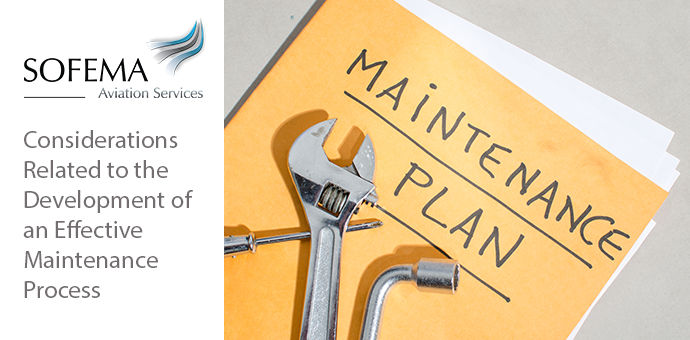Sofema Aviation Services Considers the benefits which the Industry has enjoyed thanks to MSG 3.
Introduction
Until the advent of the Maintenance Steering Group driven Maintenance Process in the late 1960’s, it was the responsibility of the Manufacturer to provide the Maintenance Program.
A manufacturer driven Maintenance Program (MP) typically provided for a philosophy which promoted multiple hard life components which required overhaul at a specified time.
The perception was that frequent overhauls resulted in more reliable equipment.
With time and the accumulation of data it was understood that some types of failures could not be mitigated with overhauls, additionally overhauls resulted in a reduction in reliability due to higher infant mortality. Finally, it was determined that the likelihood of failure did not increase with increasing operating age.
Considerations Related to the Development of an Effective Maintenance Process
Nowlan & Heap in 1978 provided evidence in a project related to Reliability Centred Maintenance (RCM) that approx. 90% of components do not benefit from a process which includes a hard time overhaul.
This understanding led to the development of a process known as “On-Condition Maintenance” where potential failures are identified through scheduled inspection.
The MSG-1 development set new ground rules for the development of scheduled maintenance programs, a process commonly known as the Maintenance Steering Group (MSG), and its later derivatives, MSG-2, and MSG-3.
The most important advantage of MSG-1 and MSG-2 was the application of On-Condition (OC) maintenance, which began an era of new thinking where it was acceptable to continue with a known deterioration, degradation or wear, and defer the required maintenance action until a future opportunity. (providing the prescribed limitations are met)
MSG-1
Was a Pilot Maintenance Program for B747-100 and introduced the concept of Hard Time & On Condition.
MSG-2
Following the development of the understanding of MSG-1, MSG-2 Introduced three broad processes to classify the scheduled maintenance requirements, i.e. Hard Time (HT), On-Condition (OC), and Condition Monitoring (CM).
OC requires an item to be periodically checked, or tested, against an appropriate physical standard to determine whether the item can continue in service or not.
MSG-3
Change the focus from “bottom-up” to “top-down” kept the concept of “hard time” & “on condition” but replaced “condition monitoring” with a “Zone Inspection Program” (ZIP).
Note: Since the cost of correcting potential failures is typically less than the cost of correcting functional failures, OC maintenance reduced the maintenance costs and additionally led to a lower spare holding by avoiding premature removals of items that were still in a satisfactory condition.
Further Information Regarding Forthcoming MSG3 Training
The course will run from 9 am to 5 pm on February 20th 2020
Details may be found here
Or see SAS’ Website www.sassofia.com or email team@sassofia.com
Tags:
Aircraft Maintenance Process, Aircraft Maintenance Program, On condition maintenance, MSG 3 Methodology, Bangkok session, Condition Monitoring




